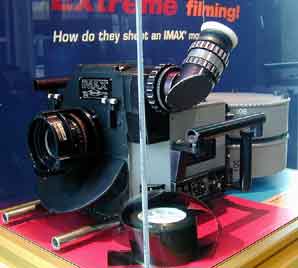10 use of Space Technology in everyday life

Space technology is the umbrella term for various tools & techniques employed to explore, study, and use outer space. This field has seen tremendous growth in the recent past because of many advancements, making it even more relevant and important. In the aerospace industry, engineers create, build, and launch craft systems, satellites, and other advanced materials. They develop new propulsion technologies. Space technology has a wide range of applications and uses, ranging from scientific research to commercial activities & national security. It includes the use of satellites, rockets, and other space-based assets.
Key areas of Space Technology
Some key areas of space technology include:
- Rocket and launch systems: Crafting and constructing the cars used to send spacecraft and satellites into space, as well as the technology needed to monitor and manage them throughout take-off, are two primary services provided by this field.
- Spacecraft design and engineering: Space technology focuses on creating and assembling spacecraft & satellites. This process entails making the structures, propulsion methods, collecting data & communication devices for these creations.
- Robotics and autonomous systems: Space technology is rapidly evolving, and it includes the use of robots & autonomous systems for a variety of purposes. These tasks range from the assembly of structures in space to repairing satellites and conducting scientific research.
- Propulsion systems: Advances in space technology have enabled engineers to develop innovative propulsion systems for space-faring vessels and satellites. Such new technologies include chemical rocket engines, ion engines, and solar sails that can provide improved control over spacecraft as well as improved fuel efficiency.
- Materials science: The space industry is continually advancing, and this requires the development of specific technologies and materials that can withstand the extreme environmental conditions of space. These items could range from radiation-resistant materials to heat-resistant elements to lightweight components.
- Communications and navigation: Space technology covers a wide range of activities like creating communication & navigation systems like GPS, television, internet & radio frequencies for deep-space communication. These have helped us to stay connected and make our lives easier.
Space technology draws upon the expertise of many disciplines, including engineering, physics, computer science, and materials science – making it an expansive field with myriad applications.
Advances in science and technology have completely transformed the way we view the world. This has paved the way for numerous practical applications that have undoubtedly made our lives better and more efficient.
See Also: AI Technology
Use of Space Technology
Space technology has significantly progressed in recent years and is now pervasive in our lives. Not only is it used for satellite communication & weather predictions but also for various other purposes. Some of the most impressive applications of space tech include:
Satellite Communications:
Satellites are used for a variety of communications purposes, including television and radio broadcasting, internet connectivity, and telephone service. Satellites in geostationary orbit (GEO) are useful for these purposes because they remain in a fixed location relative to the Earth, making them ideal for relaying signals.
Global Positioning System (GPS):
GPS is a satellite-based system that is able to pinpoint your exact location & monitor your movements. It is heavily used for navigation, transportation, search & rescue, and other multiple purposes.
Weather Forecasting:
Without satellites, it would be difficult to predict weather patterns accurately. They are indispensable tools when it comes to gathering data on weather patterns and conditions from around the world thereby providing us with valuable insights. Weather satellites are equipped with a variety of instruments, including cameras and radiometers, that allow them to observe clouds, temperature, humidity, and precipitation.
Remote Sensing:
Satellites are invaluable tools when it comes to studying the Earth’s surface & atmosphere. Thanks to the advanced instruments they have onboard, we can now gain access to a wealth of data from space. Remote sensing technology is used for a range of purposes, from examining land use to monitoring natural resources and environmental conditions. Additionally, it allows us to track natural disasters like floods and wildfires in real time.
Climate Monitoring:
The tracking of climate through the utilization of satellites has become ever more crucial as we work to comprehend and react to global warming. Satellites contain sensors that provide data on the climate of Earth, such as temperature, rain & snow amount, and sea level. This data can be utilized to gain insight into the state of our environment.
Television and Radio Broadcasting:
Satellite broadcasting technology has facilitated communication between distant parts of the world, making it effortless to stay connected. TV & radio stations regularly utilize streaming technology to deliver their content to cable & satellite companies. These providers then redistribute the content to viewers around the world, allowing them access to a broad selection of shows and channels.
Medical Applications:
Thanks to space exploration, medical imaging, and diagnostic equipment have become more sophisticated. For instance, the utilization of CT scans, which employ X-ray technology and generate detailed internal body images, wouldn’t be possible without the progress in space technology.
Navigation:
GPS technology is an invaluable asset for a variety of applications, from transportation and navigation to search & rescue. It can accurately trace the movements of people and provide precise location information.
Disaster management:
Satellites can be important tools in responding to natural disasters. They can monitor the current situations, deliver up-to-date information to aid services and help with search & rescue operations. Their data is significantly helpful in managing floods, hurricanes and earthquakes.
Environmental Monitoring:
Space technology is essential in keeping tabs on the environment and comprehending how human operations have an effect on the Earth. It is a pivotal part of ascertaining our changing world. Satellites equipped with specific tools can be deployed to gain valuable insight into the Earth’s surface, atmosphere, and other key environmental indicators such as land use, vegetation, ocean health, etc. Such data helps us track changes and identify areas of importance.
Space technology has improved our daily lives and will continue to do so in the future, bringing new possibilities with it.




